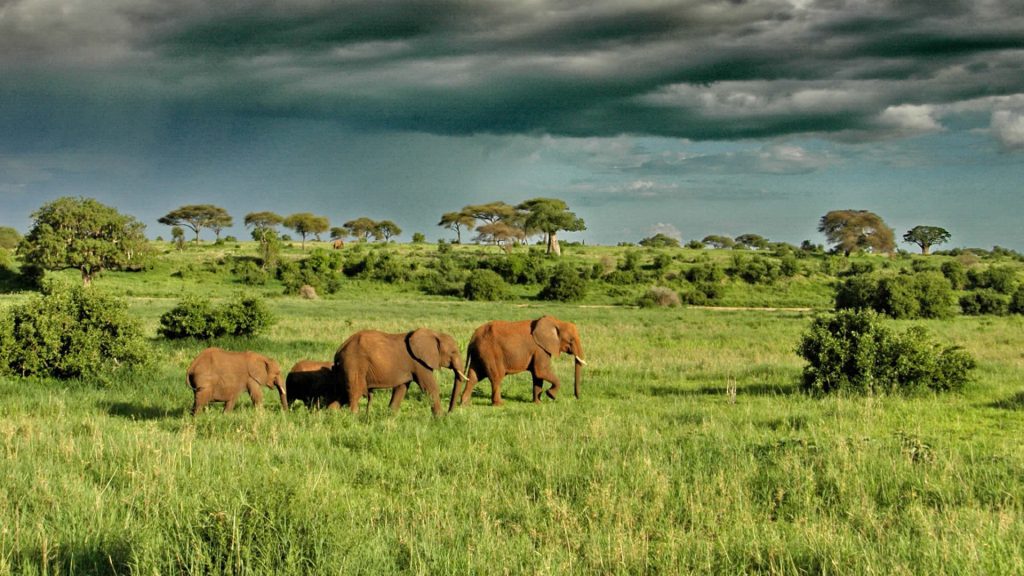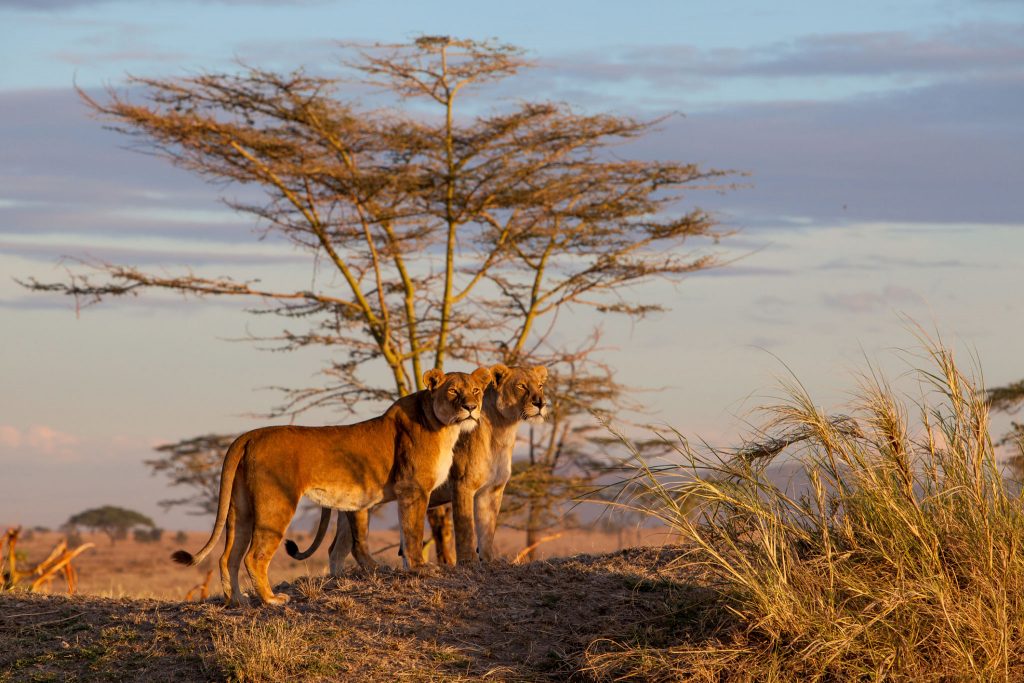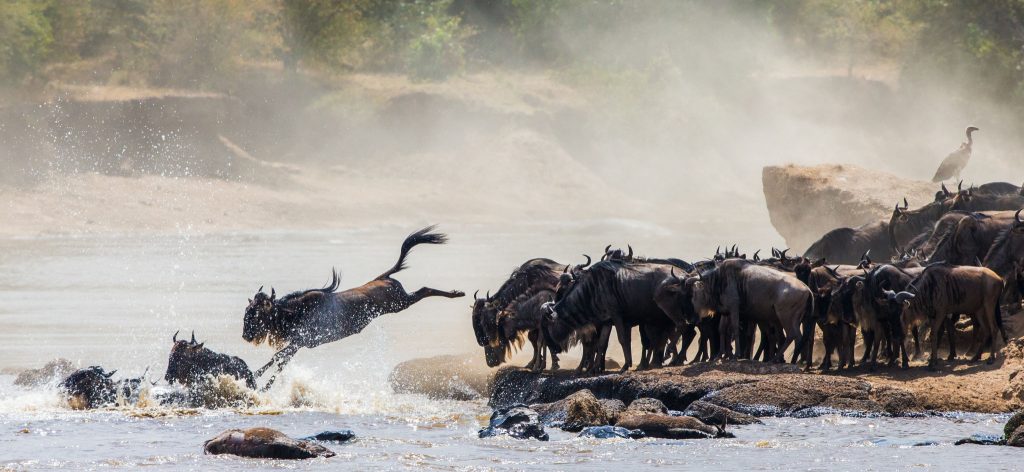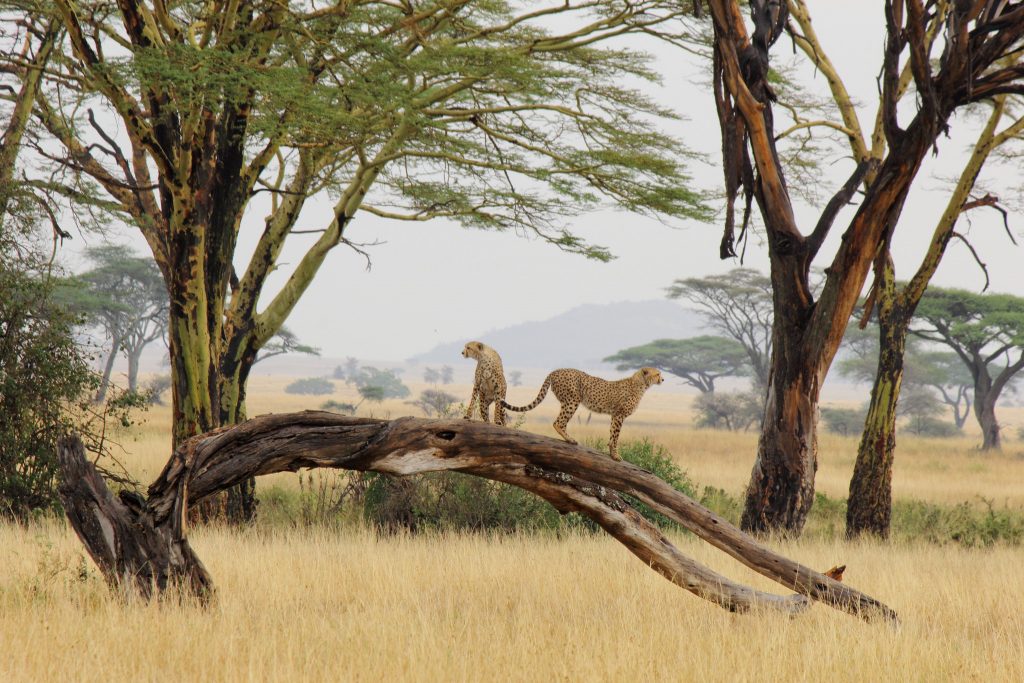8 Days Lemosho route
Trip Overview
Lemosho is our personal first choice for ascending to the roof of Africa because it offers enthralling scenic views, pristine wildlife, great acclimatization opportunities, and little climber traffic.
You will reach the western slope of Mount Kilimanjaro and be on your way to the renowned Shira Plateau after a four-hour drive from Moshi to Londorossi Gate. You will start your journey there and travel through all climate zones, from alpine meadows to endless ice. The smoothest and most gradual climb on Kilimanjaro has the best success rate.
Depending on how much time you have available, you can choose between six, seven, or eight-day programs. Always opt for longer programs over shorter ones for better acclimatization.
The 6- and 7-day Lemosho programs begin with a high-altitude drop-off; you will be transported by an off-road vehicle to an elevation of 3,500 m/11,500 f before beginning the hike from there. This is done to maximize the transition to acclimatization; the higher you start, the simpler it will be to adapt.
Arrival
When you arrive at Kilimanjaro International Airport (JRO), a representative of Siroon Experience will be waiting to greet you and drive you to the hotel that is included in the rate. The hotel offers all the amenities needed for a comfortable stay, including warm rooms, hot water, courteous staff, a pool, and Internet access. There will be a briefing with our managers in the evening, and they will make sure you are prepared to start the climb.
High-Altitude Drop Off Destination And Trekking To Shira 2 Camp
Drop-Off at a High Altitude and Trekking to Shira 2 Camp
After another briefing, a guide and a mountain support team will meet you at the hotel. You will then drive (roughly 3–4 hours) to the western entrance of Kilimanjaro National Park, Londorossi Gate (2,200 m). The group ascends to their drop-off location in off-road vehicles after completing the brief formalities of obtaining climbing permits and registering with the search and rescue service (reaching 3,500 meters). Here, for the first time, are breathtaking views of the Shira Plateau.
The distance between your starting point and your first high-altitude camp, Shira 2, has a moderate gain in elevation but is not particularly strenuous. You will be able to properly start the acclimatization process as a result. By the time you arrive at the camp, our experienced mountain crew will have set up camp, put up tents, and prepared dinner for you.
It is highly advised that you heed the following instructions going forward because today will be your first day at this altitude:
Avoid consuming caffeine and alcohol.
daily, consume more than 4 liters of bottled water (little by little, frequently)
To help with altitude sickness symptoms, take a Diamox pill. Before beginning their ascent, most mountain climbers take Diamox in the morning to ease the discomfort of altitude sickness. In the event that you might have allergies, we advise that you speak with your doctor before leaving.
You might feel uncomfortable after adjusting to the high altitude at night because your body receives less oxygen than it does during the day due to a change in your waking breathing pattern. Considering altitude, you might consequently begin to feel queasy and have headaches. Pay attention to your body, and alert your guide if you experience any altitude sickness symptoms.
Trekking From Shira 2 Camp To The Lava Tower and Descent To Barranco Camp
You will depart Shira 2 Camp (3,900 m) after breakfast and begin traveling to Lava Tower, which is a crucial location on the route (4,630 m). There are many ascents and descents along this stretch of the trail, which ends at a camp higher than 4,600 meters. This is where lunch will be because you need to spend at least 1-2 hours here in order to successfully acclimate to the altitude, even though it might be challenging and uncomfortable.
Ascend to Barranco Camp after that (3,960 m). The renowned Barranco Wall can be seen here, which is impressive due to both its enormous size and steepness! You’ll be climbing it the following day, but don’t worry—the hiking trail is very basic.
Note: If one or more participants become ill, the group may change its course and avoid the Lava Tower, instead traveling along the road used by porters. In this instance, you will only rise to an altitude of 4,400 meters, not the intended 4,630 meters.
Trekking from Barranco Camp to Karanga Camp
Breakfast, an early rise, and the ascent of the Barranco Wall (we recommend you leave the camp as early as possible to avoid crowds of the other groups). The gorge wall hike takes about an hour and is not particularly challenging. You can take a break and take pictures in front of the Kibo volcano after the climb.
After that, you begin a more challenging hike to Karanga Camp, which includes many ascents and descents along the way. Don’t worry, though; our guides are pros at determining the best pace for the group. Once you arrive at the camp, a hot lunch will be provided. You’ll need to finish a 300-meter elevation gain acclimatization hike in the direction of Barafu Camp after a few hours, and then descend back to the camp.
To hasten the acclimatization process, the acclimatization hike is a short, easy hike with a small ascent. The acclimatization hikes should be taken very seriously. They increase your chances of climbing Kilimanjaro successfully and protect you from the negative effects of altitude sickness.
Trekking from Karanga Camp to Barafu Camp
After breakfast, you travel to Barafu Summit Camp (4,640 m), which serves as the starting point for a nighttime ascent of Uhuru Peak (5,895 m). For your convenience, our team will prepare a camp for you in advance, complete with tents and sleeping bags. You must finish an acclimatization hike towards the intermediate Kosovo Summit Camp (4,800 m), after which you must return to Barafu Camp, where a hot dinner will be provided. It is preferable to rest and sleep for the remainder of the day before night summiting.
Ascent to Uhuru Peak and Descent to Millennium Camp
Starting the climb to the top of Kilimanjaro at night and leaving Barafu Camp (4,640 m): Uhuru Peak (5,895 m). Technically speaking, the climb is not too difficult; however, the high altitude presents the biggest difficulty. For the duration of the ascent, a personal guide will accompany each pair of climbers to keep an eye on their physical and mental health. If you’ve successfully reached Uhuru Peak, you may choose to descend to the nearby glacier. Then, after a two-hour break, you will return to Barafu Camp and continue your descent to Millennium Camp (3,820 m).
Remember that 90% of mishaps—including all broken arms and legs—occur during the descent. Please be mindful of your feet because there is a significant chance that you will hurt your toenails.
Descent from Millennium Camp to Mweka Gate
Tropical rainforest surrounds the camp. You will feel relieved from the height reduction and accomplishment of reaching the summit when you awaken. You will leave the park through the Mweka Gate following a hearty breakfast (1,640 m). Following your descent, the entire group will assemble to congratulate you and give you the opportunity to leave feedback in the guestbook about the climb. Finally, we will give you your commemorative certificates in our office and arrange for transportation to take you back to your hotel.
Departure
After some downtime, head to the airport.
The hotel has an 11:00 AM check-out time. There is the option to extend your hotel stay for an additional cost if you need to check out late due to an evening flight.
Mount Kilimanjaro
Experience our Tailor-made Kilimanjaro Expeditions
Packages
Tours & Safaris
Why choose anything less when Tanzania Safari Tours is your ideal vacation? With our exclusive Tanzania Safari Packages, which feature completely customized itineraries that our previous clients have fallen in love with, you can select the best Tanzania Safari Itineraries, the best Tanzania Safari Destinations, take the best safari pictures, and add to your memories.




